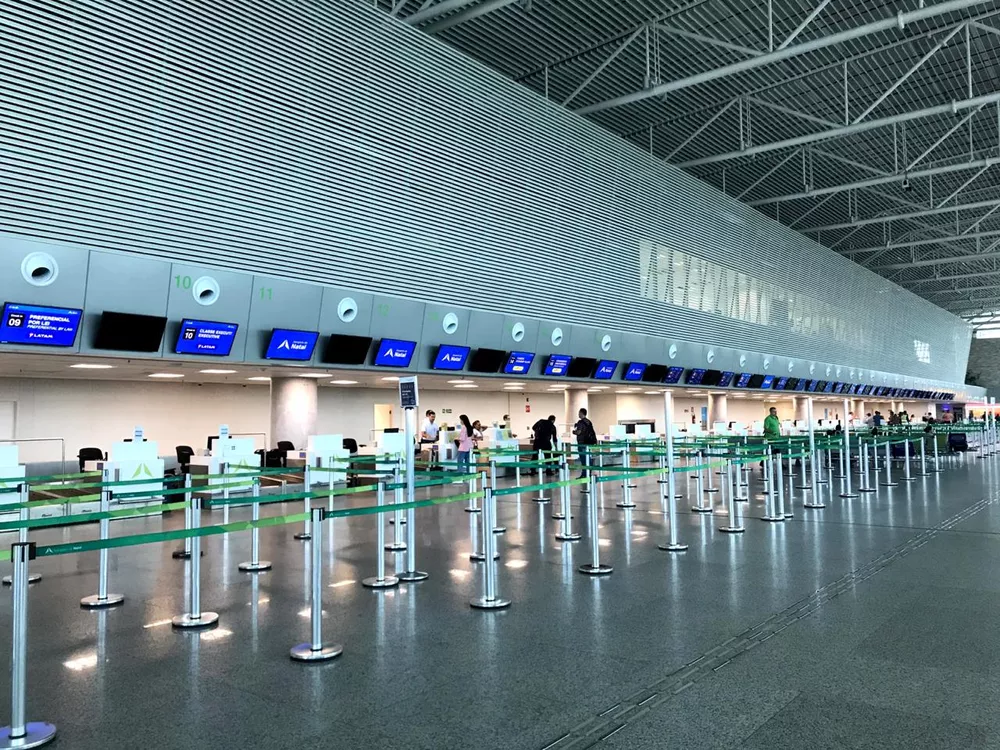Natal is an important city center that lies toward the northeastern part of Brazil. Mainly visited by domestic and international tourists, it has its importance in Natal infrastructure at its airports, which has grown with time and so have its needs to become one of the biggest destinations of tourism and business in the region. This article covers the old Parnamirim airport, construction and development of the new airport in São Gonçalo do Amarante together with an overview of the current international flights out of Natal.
For information about Brazilian airports, including Natal International Airport, visit the website of Infraero, a state organization that regulates airports in Brazil. Flight departures and arrivals to Natal can be checked directly on the Natal International Airport website.
The Old Airport in Parnamirim: Augusto Severo International Airport
The first airport to serve Natal was that of Parnamirim’s Augusto Severo International Airport, 18 kilometers away from the city center. The name of the airport is given after the Brazilian aviator Augusto Severo de Albuquerque Maranhão, which starts off with a history initially intertwined with World War II. Due to its geographical position, this airport was used by the United States Air Force as a base during the war since it formed a very key stopover point for aircraft traveling from the Americas to Africa and Europe.
After the war, this airport was returned to civilian authorities and started to act as the regional main airport. For many years, Augusto Severo International Airport was the entrance to Natal, receiving domestic and international flights. It was of utmost importance for the development of tourism in the area, especially with an increased flow of foreigners coming to Natal’s magnificent beaches and landscapes.
Infrastructure and Capacity

Although Augusto Severo International Airport was very vital during its time, it naturally reached a point where it was naturally limited in both capacity and structure. By the start of the 21st century, it had become evident that the airport was unable to efficiently and effectively serve the rising number of passengers and that it also could not be extended given its localization within Parnamirim’s urban area. There became a more and more pressing need for a modern facility that could handle a higher number of passengers, having the ability also to serve larger aircraft.
The Need for Expansion: Construction of the New Governador Aluízio Alves International Airport
A new and modern airport was projected to correct all the deficiencies of Augusto Severo International Airport. São Gonçalo do Amarante was the area selected for this new infrastructure, 40 kilometers away from the city center of Natal. This project was then considered of vital importance to provide for future expansions regarding air traffic, tourism, and the economic development of this region.
Construction of Governador Aluízio Alves International Airport—named for a former governor of Rio Grande do Norte—began in 2011. The project was part of a much larger initiative to upgrade Brazilian airport facilities in time for two of the world’s most highly visible events: the 2014 FIFA World Cup and the 2016 Summer Olympics. In this case, the Brazilian government and private investors collaborated on financing and managing the building of the airport under a PPP format.
On May 31, 2014, the new airport was inaugurated. This airport replaced Augusto Severo International Airport as Natal’s main airport. Governador Aluízio Alves International Airport became the first airport in Brazil to have a private company as its administrator, Inframerica, under a concession agreement for a period of 25 years.
Modern Conditions and Higher Capacity
In marked contrast to the earlier one, Governador Aluízio Alves International Airport was designed to be modern, equipped, and designed to cater to many more passengers. It has a 3,000-meter-long runway through which large international aircraft can be accommodated, a modern terminal building with ample passenger services, and, not to forget, facilities that will cater to both domestic and international flights.
The airport terminal covers an area of 40,000 square meters with 22 check-in counters and 8 boarding bridges; large commercial areas for shops, restaurants, and lounges. It is able to support over 6 million passengers per year if necessary and has the possibility of expansion.
Current International Flights from Governador Aluízio Alves International Airport
In 2024, Governador Aluízio Alves International Airport is still one of the most important airports connecting Natal to the world. Despite a drop in its international traffic due to COVID-19, the airport picked up again because of the reopening of the world to travel.
International Destinations
The airport currently offers direct international flights to some key destinations, primarily in Europe and South America. Notable among these international routes include the following:
- Lisbon, Portugal: The most important route is the one operated by TAP Air Portugal, which links Natal directly to Europe. Lisbon serves as a gateway for passengers going on to travel into the interior of other European cities.
- Buenos Aires, Argentina: With the growing flow of Argentine tourists to Natal, especially during the South American summer, this route answers the demand.
- Cape Verde: Natal has established itself as a connection between Brazil and the African continent. The flights to Cape Verde provide a link with several African destinations.
Adding to these routes, there are seasonal and chartered flights that help the peak tourist seasons reach Natal’s beaches and resorts from all over the world.
Economic Impact
In the case of Governador Aluízio Alves International Airport, the development had a great influence on the local economy in that it is able to trigger new investments in tourism, hospitality, and logistics, generate jobs, and raise the profile for this region as an international destination. The ease of access brought about by the airport has been one of the strong factors in favor of business travelers. It builds up the trade and industry in the state of Rio Grande do Norte.
Challenges and Future Prospects
Even with its super modern structure, Governador Aluízio Alves International Airport still encounters some barriers, especially in relation to raising the number of international flights. This aerodrome does have the capacity to accept more movement; however, the way to capture new companies and routes became another issue. Its administration keeps working on promoting the facility to international carriers by disclosing the whole potential of Natal as a tourist destination and its strategic geographical position as a hub for flights between South America, Europe, and Africa.
Further, discussions are in process regarding the improvement in ground transportation links between the Airport and Natal. The distance from the city center is still a concern for some travelers. Proposals are considered to be in place for improving the road infrastructure and possible rail links that can make it more accessible.
A charming city that offers a great and modern airport infrastructure – Fly to Natal!
From Augusto Severo International Airport in Parnamirim, which stays in the memory of every visitor to Natal, to the modern Governador Aluízio Alves International Airport in São Gonçalo do Amarante, this journey of air travel reflects the growth of the city and the aspirations toward the global scenery. The increasingly crucial role that the airport will have in the development of Rio Grande do Norte, with international links and improved infrastructure, will make it able to host visitors from all parts of the world, thereby lending momentum to the regional economy.







